Aerobic fitness offers you remarkable benefits as a senior, strengthening your heart, improving circulation, and enhancing brain function. You’ll experience better management of chronic conditions like diabetes and hypertension while enjoying mood-boosting endorphins. Low-impact options like swimming, walking, and cycling protect your joints while building endurance. Group exercise programs provide valuable social connections that combat isolation. Discover how just 30 minutes daily can transform your golden years into your healthiest chapter.
The Heart-Healthy Benefits of Aerobic Exercise for Seniors
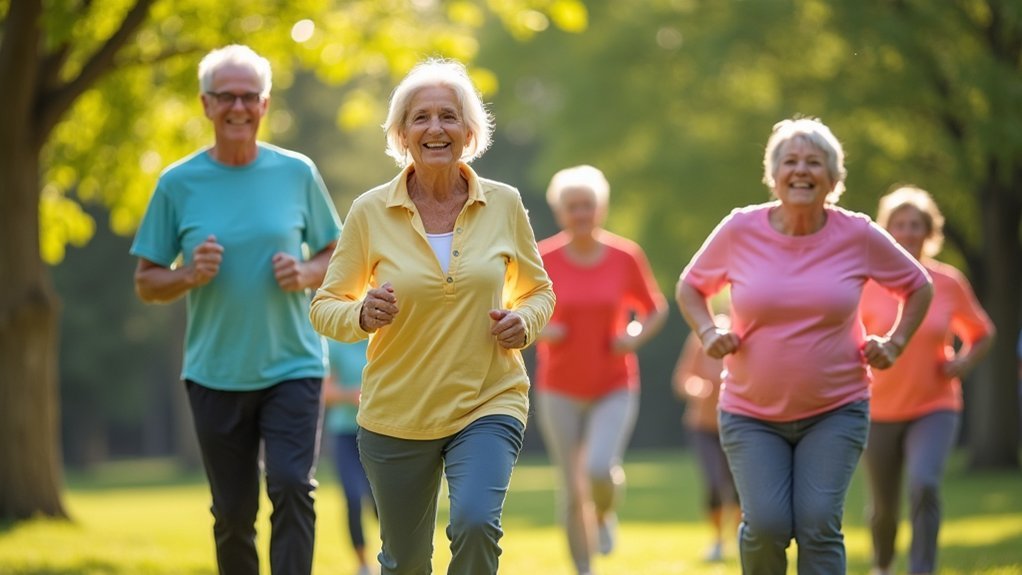
While many seniors focus on strength training, aerobic exercise delivers remarkable cardiovascular benefits that can greatly extend quality of life.
Regular cardio activities strengthen your heart muscle and improve circulation, directly addressing the heart disease that affects over 20% of adults aged 65+.
The silent epidemic of heart disease strikes 1 in 5 seniors, but regular cardio fortifies your heart and enhances vital circulation.
You’ll experience improved endothelial function and reduced arterial stiffness through activities like walking, swimming, or cycling.
These exercises increase nitric oxide availability, promoting vasodilation and maintaining vascular elasticity.
Just 30 minutes of daily walking can notably lower your blood pressure, balance cholesterol levels, and enhance overall endurance. These activities have the added benefit of burning more calories compared to other types of exercise.
The benefits extend beyond your heart—aerobic exercise helps manage diabetes, reduces stroke risk, and combats obesity.
Boosting Brain Power Through Regular Aerobic Activity
As researchers continue to uncover the intricate relationship between physical activity and cognitive health, aerobic exercise emerges as a powerful tool for maintaining brain function in seniors.
When you engage in regular aerobic activity, you’re literally expanding your brain—particularly the hippocampus, your memory center. This growth translates to improved memory performance and enhanced cognitive abilities.
Your brain also benefits from increased blood flow to critical regions involved in learning and memory. A 26-week study demonstrated that Cathepsin B levels increased after supervised treadmill training, correlating with improved verbal learning and memory.
You’ll find protection against age-related cognitive decline as exercise influences biomarkers associated with Alzheimer’s risk and produces neuroprotective effects. The production of BDNF and Klotho supports neuroplasticity and resilience against neurodegenerative diseases.
Even short-term aerobic exercise can sharpen your memory and executive functions, offering accessible brain-boosting benefits regardless of your fitness level.
Managing Chronic Conditions With Cardiovascular Fitness
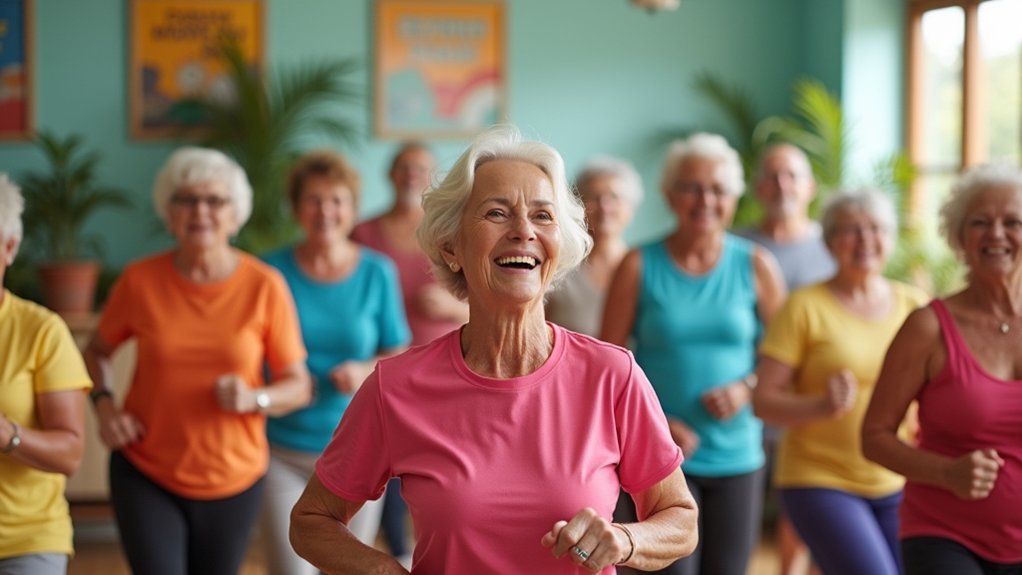
For seniors living with ongoing health challenges, cardiovascular fitness offers a powerful strategy to manage and potentially reverse chronic conditions.
Regular aerobic exercise markedly improves your cardiovascular function by enhancing heart rate, improving circulation, and reducing blood pressure.
Consistent cardiovascular exercise strengthens your heart, enhances blood flow, and naturally lowers hypertension.
You’ll experience substantial benefits for metabolic health too.
Aerobic activity improves insulin sensitivity and lowers blood glucose levels—crucial advantages if you’re managing diabetes.
It also helps maintain healthy lipid profiles, reducing dyslipidemia risk.
Studies show that elderly patients participating in long-term aerobic exercise experience significantly reduced rates of liver steatosis and obesity.
Low-Impact Aerobic Options for Joint-Friendly Workouts
Joint health becomes increasingly precious as you age, making low-impact aerobic exercises the cornerstone of senior fitness routines.
Water-based activities like swimming and aqua aerobics offer excellent cardiovascular benefits while cushioning your joints from stress.
Try brisk walking daily to maintain bone strength without jarring impact. Indoor cycling provides effective cardio workouts regardless of weather conditions.
For social engagement combined with fitness, consider ballroom dancing, which enhances both physical and cognitive abilities.
At home, chair exercises can be adapted for any mobility level, while gardening doubles as a therapeutic activity and gentle workout. Chair squats are particularly beneficial as they strengthen leg muscles for better balance and stability, reducing your risk of falls.
For structure, follow senior-specific exercise videos that guide you through proper techniques.
Always consult your healthcare provider before starting new exercise routines, and consider working with a personal trainer to develop a customized program for your needs.
Building Social Connections Through Group Exercise Programs
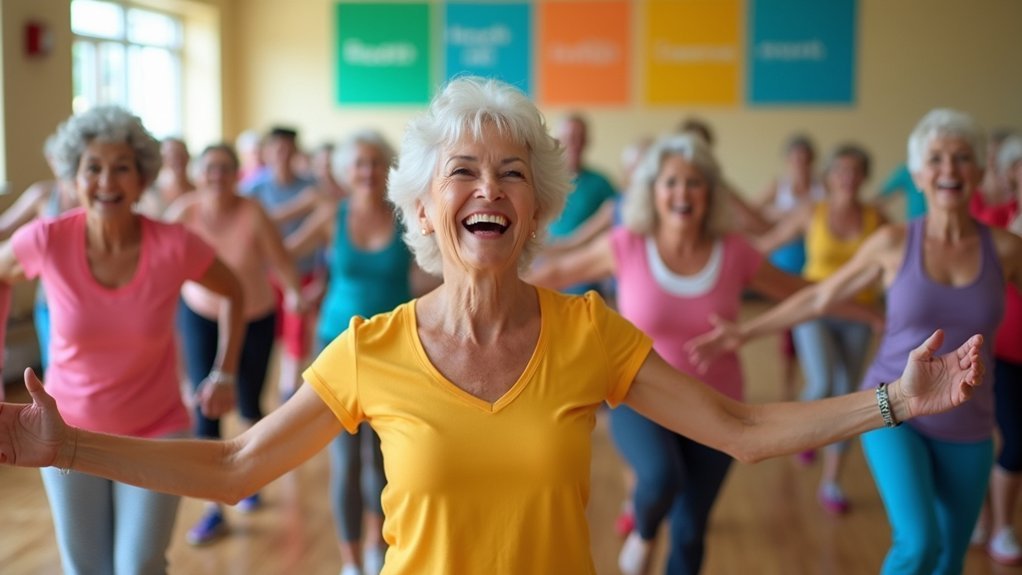
You’ll find that group exercise programs offer much more than physical benefits—they create valuable social bonds that combat isolation among seniors.
Group dynamics foster a supportive community where fitness goals become shared journeys rather than solitary struggles.
Regular participation in these activities helps seniors form lasting relationships that often extend beyond the exercise setting into other areas of their lives.
These friendship-based fitness environments help break down isolation barriers, providing motivation that’s often missing when exercising alone.
Group Dynamics Matter
While individual exercise routines can improve physical health, the power of group dynamics creates a multidimensional wellness experience for seniors. You’ll find yourself more motivated and consistent when exercising alongside peers who share similar goals. These group settings often incorporate themed classes inspired by pop culture or seasonal celebrations to enhance participation and enjoyment.
| Group Dynamic Element | Benefit to Seniors |
|---|---|
| Structured schedules | Establishes consistent exercise routines |
| Peer accountability | Increases commitment to attendance |
| Supportive feedback | Builds confidence and proper technique |
| Shared achievements | Creates sense of accomplishment |
| Community connection | Reduces isolation and loneliness |
The social bonds formed during these classes often extend beyond the workout space, creating lasting friendships. You’ll experience improved mental health through the combination of endorphin release and meaningful social interaction. Group settings also provide cognitive stimulation that helps maintain mental sharpness while fostering a sense of belonging.
Breaking Isolation Barriers
As seniors age, the risk of social isolation increases substantially, making group exercise programs a powerful antidote to loneliness.
When you join activities like walking groups, chair yoga, or water aerobics, you’re not just improving your physical health—you’re creating opportunities to form meaningful connections.
Regular attendance at these classes helps you build and maintain social networks that become significant support systems. The shared experience of working toward fitness goals creates bonds with others who understand your journey.
You’ll find yourself looking forward to seeing familiar faces and feeling that sense of belonging that’s fundamental for emotional well-being.
Studies have shown that seniors who participate in regular physical activity report lower loneliness levels compared to their sedentary counterparts.
The combination of physical activity and social interaction provides a dual benefit: strengthened muscles alongside strengthened relationships.
Both are essential components for maintaining quality of life as you age.
Fitness Through Friendship
Group exercise programs provide a perfect environment for seniors to develop lasting friendships while improving their physical fitness.
You’ll find these social connections become as valuable as the exercise itself, creating a support system that keeps you coming back. When you participate in classes like Zumba Gold or tai chi, you’re not just strengthening your body—you’re building relationships that combat loneliness and isolation. Accountability from fellow participants significantly helps seniors maintain consistency in their fitness routines when they might otherwise skip sessions.
- Share progress and celebrate achievements with peers who understand your fitness journey
- Maintain motivation through mutual encouragement and scheduled meetups
- Experience improved cognitive function and mental well-being through regular social interaction
These friendship connections make exercise more enjoyable and sustainable.
The camaraderie developed in group settings transforms physical activity from a solitary obligation into a social highlight of your week.
Creating a Safe and Effective Aerobic Routine for Older Adults
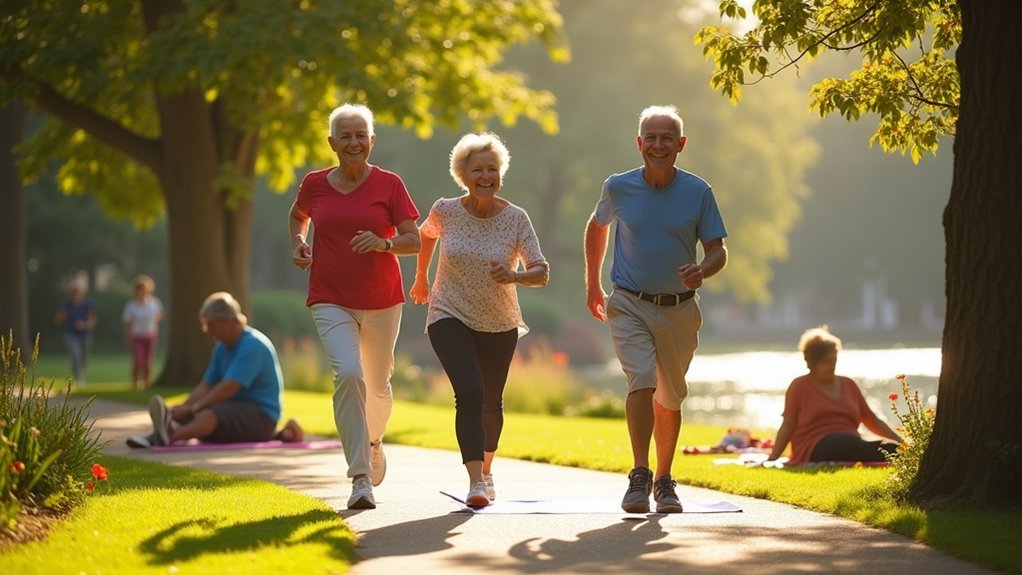
Creating a safe and effective aerobic routine requires careful planning and consideration of individual needs, especially for older adults.
Before starting any exercise program, consult your healthcare provider to guarantee it’s appropriate for your health conditions.
Medical consultation is essential before beginning any new exercise regimen to ensure it suits your specific health needs.
Begin with manageable sessions and gradually increase intensity to prevent injury. Low-impact activities such as swimming, walking, or cycling provide excellent cardiovascular benefits while minimizing stress on aging joints.
Wearing proper footwear and using supportive equipment greatly reduces fall risks.
Don’t forget to incorporate rest days into your schedule to avoid overexertion.
Frequently Asked Questions
How Do Medications Interact With Aerobic Exercise Routines?
Medications can alter your heart rate, blood pressure, and blood glucose during aerobic workouts. You’ll need to time exercise around medication schedules and monitor closely for side effects like hypotension or hypoglycemia.
Can Aerobic Fitness Help Improve Sleep Quality in Seniors?
Yes, aerobic fitness can greatly improve your sleep quality as a senior. You’ll experience better sleep latency, duration, and efficiency when you engage in moderate-intensity aerobic exercises for at least 150 minutes weekly.
How Does Seasonal Weather Affect Outdoor Aerobic Exercise Options?
Seasonal weather greatly impacts your outdoor exercise options. You’ll find summer heat requires early morning workouts, while winter brings ice hazards. Spring and fall offer ideal conditions, but always adapt to maintain year-round activity.
What Aerobic Exercises Are Best After Joint Replacement Surgery?
After joint replacement surgery, you’ll benefit most from low-impact aerobic exercises like walking, swimming, cycling on a stationary bike, using an elliptical machine, and water aerobics. Always start gradually and follow your doctor’s guidance.
How Long Before Seniors See Measurable Fitness Improvements?
You’ll typically see fitness improvements within 2-8 weeks. Your cardiovascular function can improve in just a few weeks, while cognitive benefits and strength gains become noticeable after 1-2 months of consistent exercise.
In Summary
You’ve now discovered the incredible power of aerobic fitness for your golden years. It’s not just about strengthening your heart—you’re also boosting your brain function, managing chronic conditions, and building meaningful social connections. Whether you choose swimming, walking, or group dance classes, you’ll find options that protect your joints while enhancing your quality of life. Don’t wait—start your aerobic journey today and embrace the vibrant senior life you deserve.

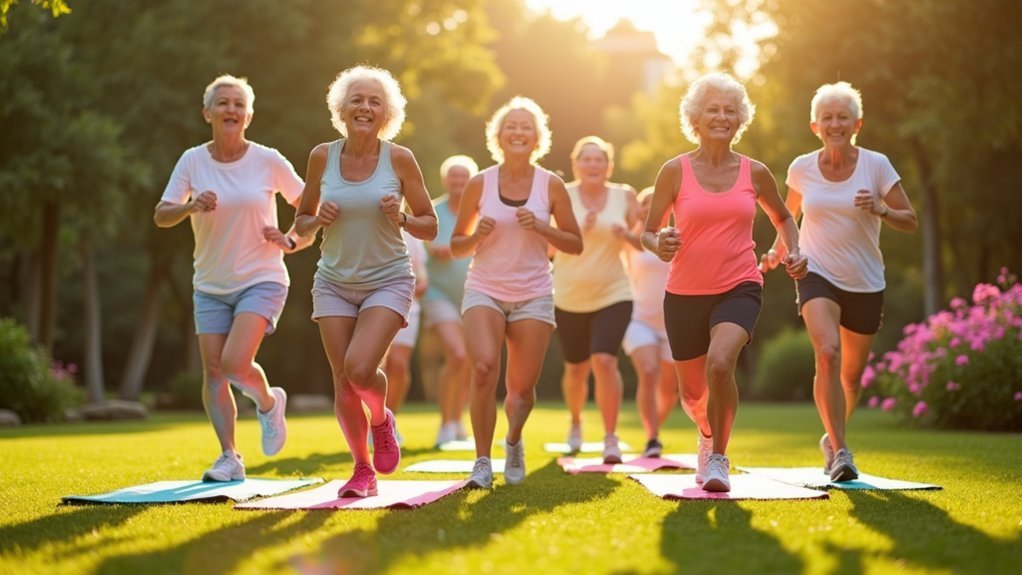
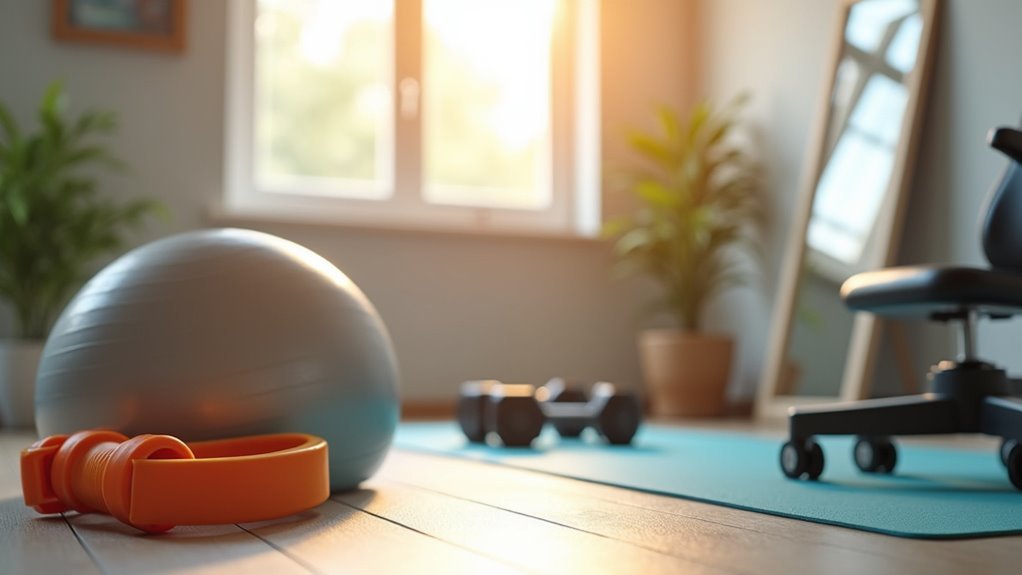
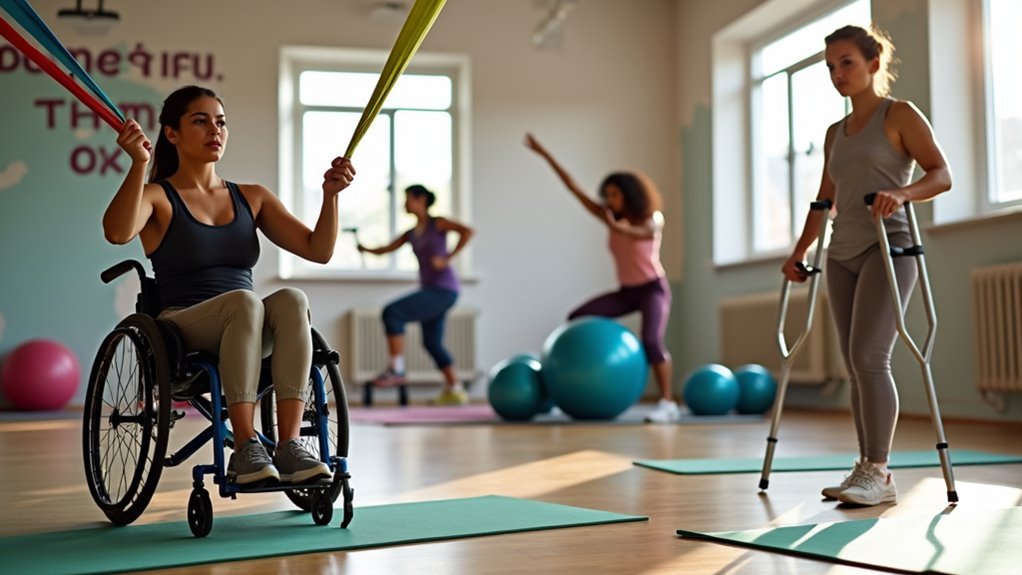
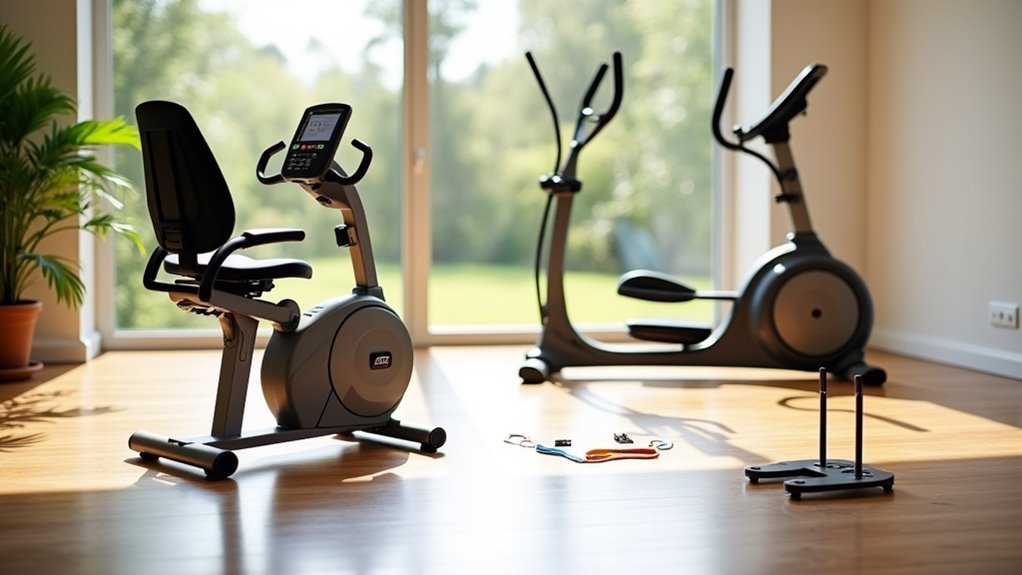
Leave a Reply